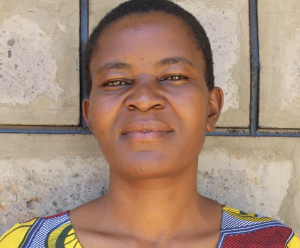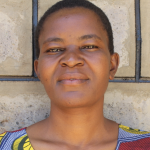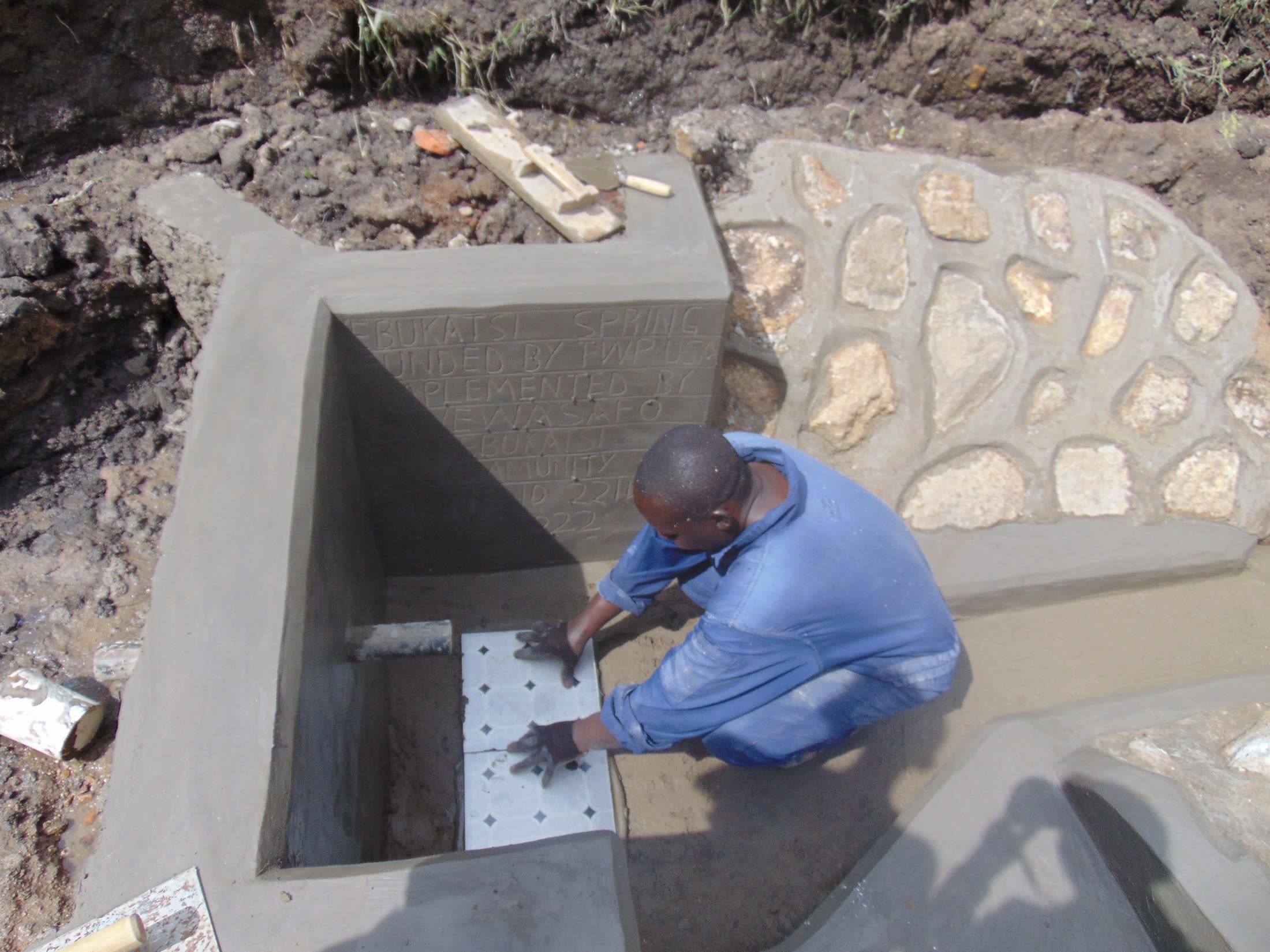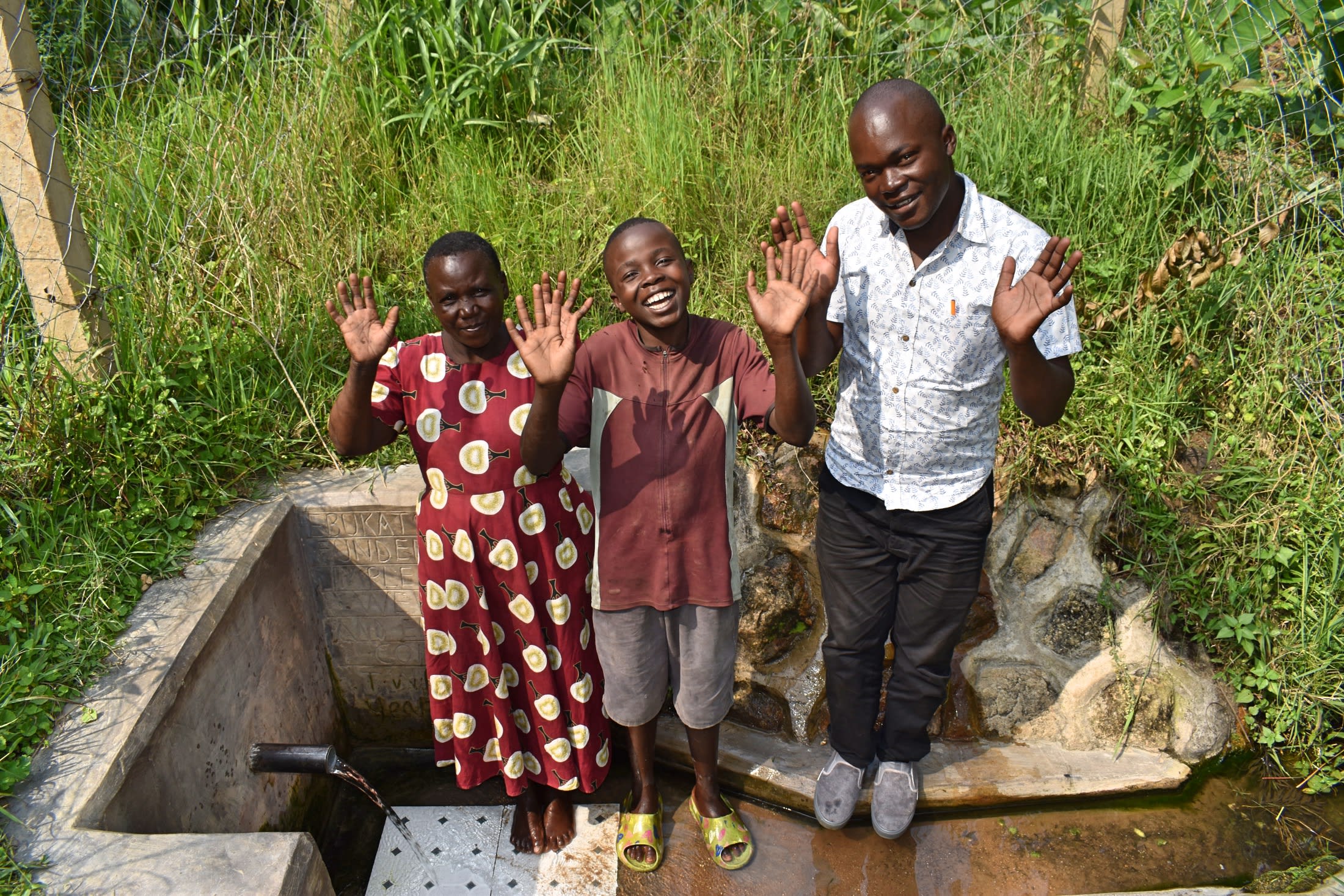Ebukatshi's 140 community members rely on their spring as their primary water source to meet daily water needs, but it presents several issues.

The spring is shallow and open, surrounded by bushes, rocks, and grass with an unprotected pipe inserted to make collection faster. It is easily susceptible to contamination, but even so, people must use the water because they do not have an alternative.
"I get my water very early in the morning. This means I have to be up at around 4 a.m. in order to be there early enough to avoid the queue that gets longer as the sun rises. Sometimes it means foregoing my sleep in order to be there early enough. This, in turn, affects my [productivity] during the day at times," said Everlyne Nyota, a 27-year-old farmer shown below collecting water.

The spring is overcrowded, causing people to waste valuable time waiting in lines eating up time that would have been used for other activities. The congestion also leads to frequent quarrels, causing tension and disunity in the community.

Twelve-year-old Rabson S. (shown above at the spring) echoed the same sentiment as Everlyne. "I have to go [wait in the] long queues at the water point every day after school so as to be able to get water to be used by my family. This means a lot of time is wasted there, so many times I have to forego playing with my friends in order to get water," said Rabson.
Hopefully, with the spring's protection, community members will be able to use their valuable time towards other necessary tasks, and the community will experience more peace and unity.
What We Can Do:
Spring Protection
Protecting the spring will help provide access to cleaner and safer water and reduce the time people have to spend to fetch it. Construction will keep surface runoff and other contaminants out of the water. With the community’s high involvement in the process, there should be a good sense of responsibility and ownership for the new clean water source.
Fetching water is a task predominantly carried out by women and young girls. Protecting the spring and offering training and support will, therefore, help empower the female members of the community by freeing up more of their time and energy to engage and invest in income-generating activities and their education.
Training on Health, Hygiene and More
To hold trainings during the pandemic, we work closely with both community leaders and the local government to approve small groups to attend training. We ask community leaders to invite a select yet representative group of people to attend training who will then act as ambassadors to the rest of the community to share what they learn. We also communicate our expectations of physical distancing and wearing masks for all who choose to attend.
The training will focus on improved hygiene, health, and sanitation habits in this community. With the community’s input, we will identify key leverage points where they can alter their practices at the personal, household, and community levels to affect change. This training will help to ensure participants have the knowledge they need about healthy practices and their importance to make the most of their water point as soon as water is flowing.
Our team of facilitators will use a variety of methods to train community members. Some of these methods include participatory hygiene and sanitation transformation, asset-based community development, group discussions, handouts, and demonstrations at the spring.
One of the most important issues we plan to cover is the handling, storage, and treatment of water. Having a clean water source will be extremely helpful, but it is useless if water gets contaminated by the time it is consumed. We and the community strongly believe that all of these components will work together to improve living standards here, which will help to unlock the potential for these community members to live better, healthier lives.
We will then conduct a small series of follow-up trainings before transitioning to our regularly scheduled support visits throughout the year.
Training will result in the formation of a water user committee, elected by their peers, that will oversee the operations and maintenance of the spring. The committee will enforce proper behavior around the spring and delegate tasks that will help preserve the site, such as building a fence and digging proper drainage channels. The fence will keep out destructive animals and unwanted waste, and the drainage will keep the area’s mosquito population at a minimum.

 Protected Spring
Protected Spring
 Rehabilitation Project
Rehabilitation Project





































